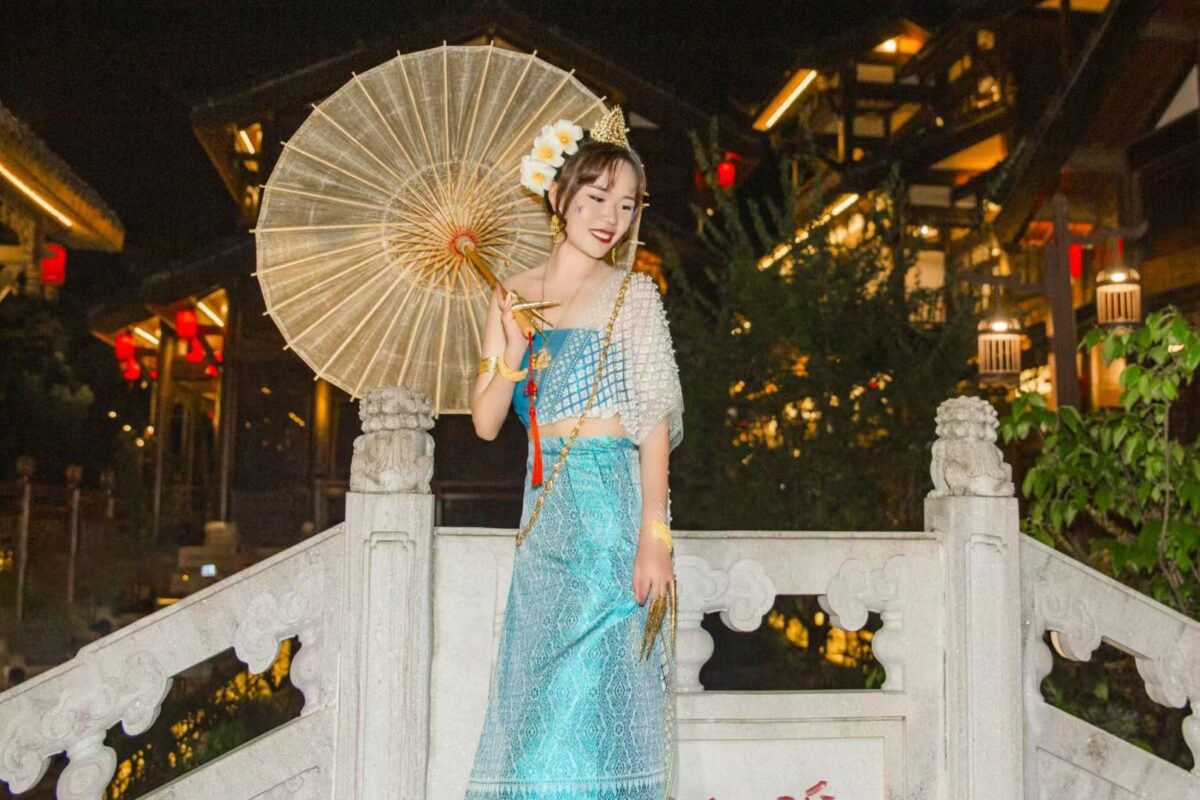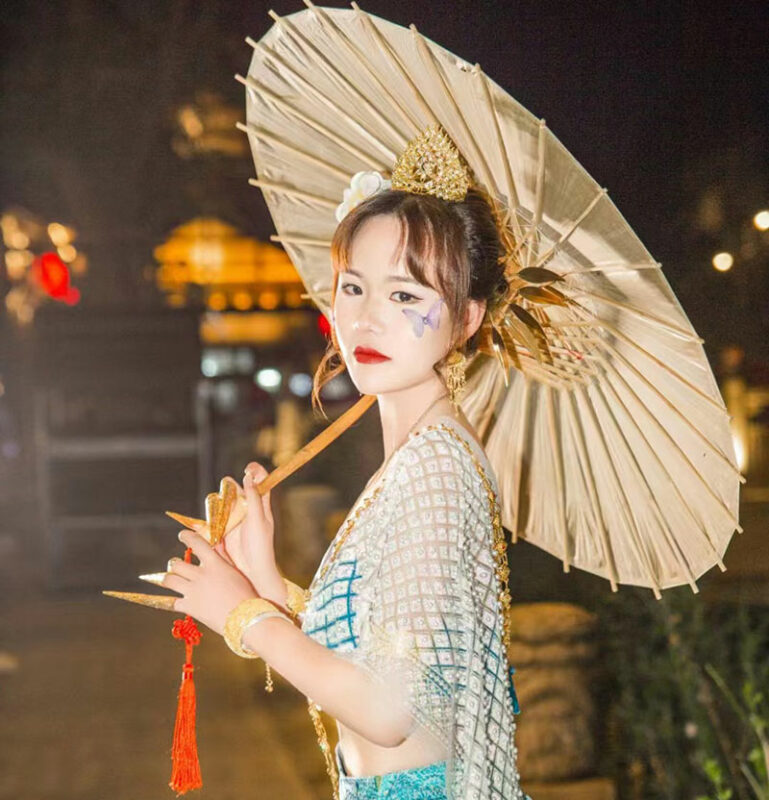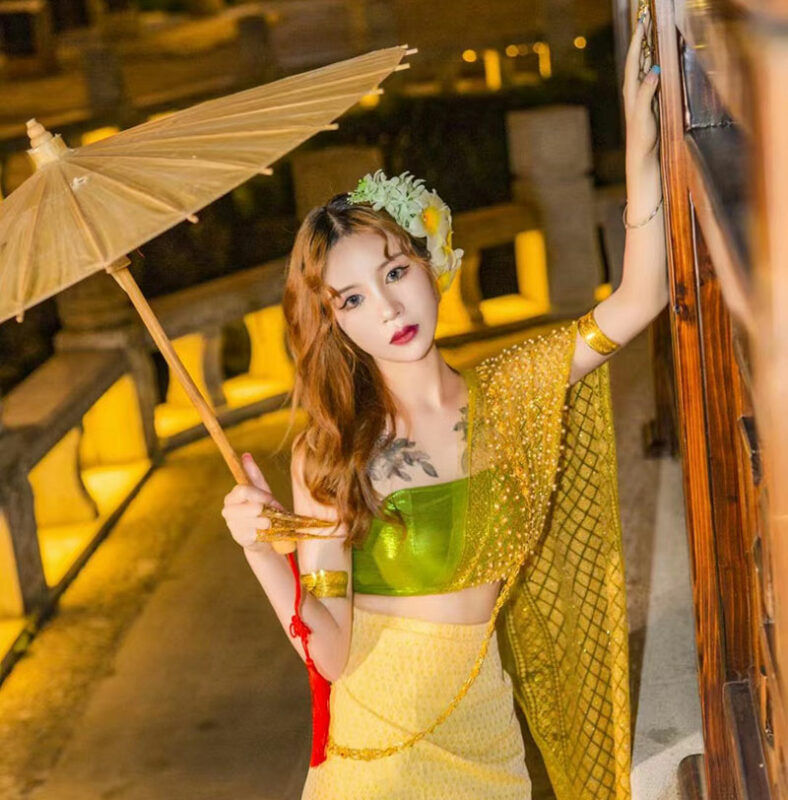Blog
Pang Xuejun’s collection ‘Paper Umbrella’
Pang Xuejun’s collection ‘Paper Umbrella’
Pure terroir
It was a place where her heart would return to for the rest of her life, a place where she could “immerse herself in the spiritual life she had created, not to be disturbed or eroded by the increasingly noisy and impetuous world, but to maintain a quiet, unhurried and independent state of mind”. “The artist’s work is a unique combination of the two. Thus the paper umbrellas of western Hunan and the paper umbrellas of western Hunan have become Peng Xuejun’s eternal spiritual homeland.
Peng Xuejun has placed the characters in the landscapes of western Hunan, not only giving them the soul of the landscape, but also imprinting them with a certain cultural and regional identity. The story of the dyed house makes us feel as if we are travelling through the indigo dyed cloth, the life of a woman holds up the concentrated epic of a nation, the dancing Jinmei seems to explain to us the life and death of the Miao people, or the simple and ignorant folk style, allowing us to see the sorrow in the openness of a fire. A woman like Xing or Ah Tao may show us the hardships of the western Hunan borderlands, but she also shows us the greatness and strength of a woman in her weakness. In the smoke of the cooking fires, we see a picture similar to the one Shen Congwen painted for me, in which a group of people, more beautiful than the landscape, live in the landscape, perhaps living the simplest of lives, but with more hardships. The promise of an oil paper umbrella. The promise of a paper umbrella, the call of “Sister”, the reverie of the fluttering skirts of the years, the everlasting guardianship of family love, are like the peach blossom, blossoming and dying in the mountains, its branches flourishing.
A pure and beautiful image of a young girl
In The Paper Umbrella, there are many images of young girls. One is the image of ‘I’, who appears in the novel in the first person, either as a combination of Peng Xuejun’s own experience and the novel’s fiction, or as a narrative technique. The first-person narrative perspective becomes intrinsic. The first-person narrative perspective becomes an internal narrative, making the ‘I’ in the story an omniscient narrator and an ‘I’ in the text. The “I” is the protagonist of the story, like an autobiography, writing about his own experiences as a child and teenager, while the “I” is also a character in the text. The identity of this character is twofold: she can be a girl, narrating from a perspective closer to the child’s heart, making the text realistic and credible, and giving the young reader a sense of intimacy and calmness in the process of reading it; this “I” is also a woman, i.e. Peng Xuejun herself, and she combines children’s literature and women’s literature. The “I” is also a woman, Peng Xuejun herself, who combines children’s and women’s literature. This young girl is both a witness and an observer to the events. The narrative intervention of the adult ‘I’ clearly has the effect of helping the child reader to grasp the meaning behind the life that the childhood ‘I’ felt. I am afraid that the writer is using these narrative interventions to further enhance the artistic dimension of the work in order to care for the development of the child (the reader). In You Are My Sister, the ‘I’, as a spectator and narrator, participates in the development and climax of the story, such as witnessing Ah Tao give up her love for her sister, and witnessing her death. This participation allows the “I” to express my feelings directly, such as praise and sympathy for Ah Tao.
An innocent fairy tale ending
In The Paper Umbrella, the death of my grandfather takes on a different form in the lives of my grandmother and I. The interplay of fiction and illusion is extremely mysterious, yet the mystery is solved by the simplest of things – love, affection and love. Even when the oil paper umbrella is eventually submerged in the flood, it still exists in a spiritual form in ‘my’ life. Grandma gave me the paper umbrella that my grandfather had used as a token of affection, and it saved my life in the flood. The continuation of life is the continuation of love, and this is perhaps the simple answer to the transition between life and death. Peng Xuejun’s work is also about death, but the depiction of death tends to be cheerful and positive, weakening the tragic aspects of death rather than intensifying the tragic conflict. This is a clear fairy tale, in which the death of a human being is transformed into a colourful cloud or a peach blossom, a depiction that actually weakens the sadness of death and emphasises the more positive movement of life, emphasising the fact that human life, with its good humanity, exists in another way even after death.




